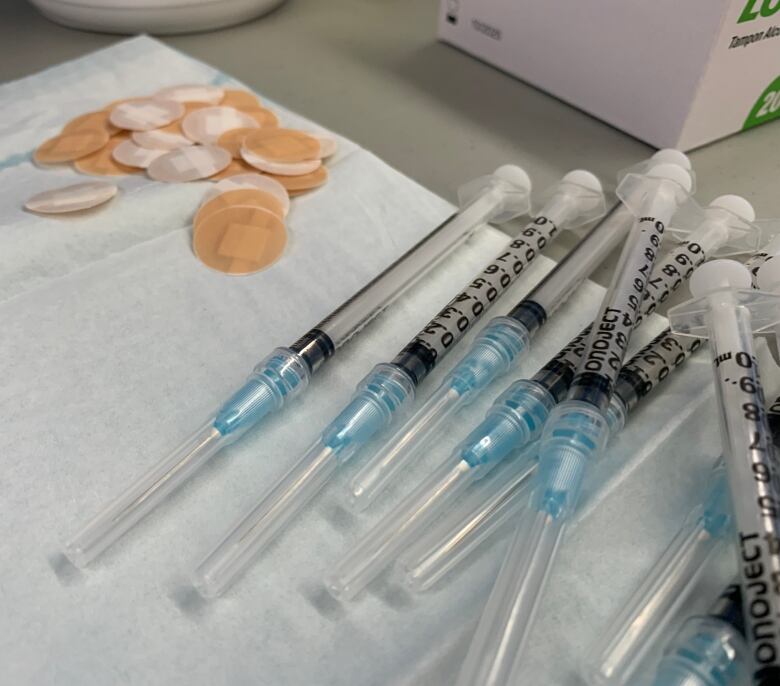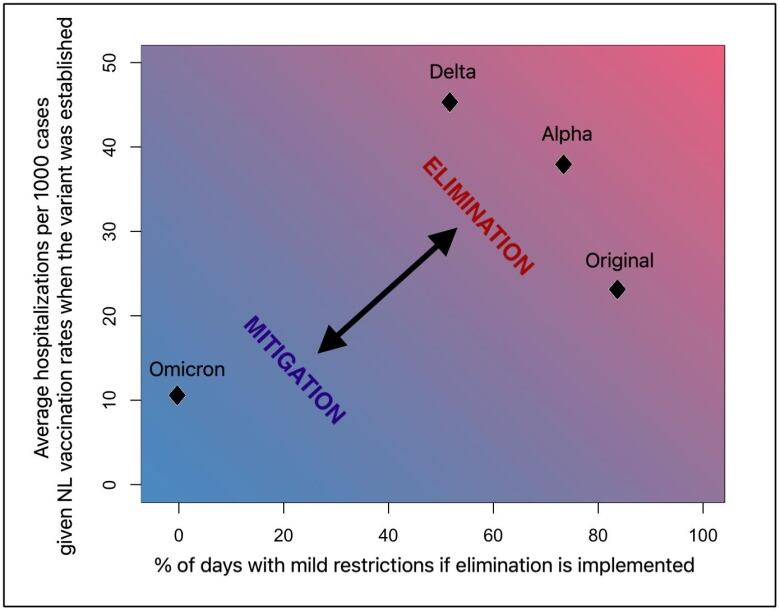It's not realistic to eliminate COVID-19 in Newfoundland and Labrador. Here's why
2 MUN mathematicians explain why we're now living with the virus instead of getting rid of it

This column is an opinion by Amy Hurford, an associate professor jointly appointed to Memorial University's biology department and mathematics and statistics department, and Maria Martignoni, a mathematical modeller and research fellow in Memorial University's department of mathematics and statistics.For more information aboutCBC's Opinion section, please see theFAQ.
To face the COVID-19 pandemic, Newfoundland and Labrador implemented strict border control and periods of severe restrictions to cut the number of cases to zero whenever outbreaks occurred. As a result, the province experienced very minimal community spread for extended periods of time.
But this month, despite the fact the number of infections is rising again, public health restrictions have been loosened, rather than tightened.
Why is Newfoundland and Labrador no longer aiming for COVID-19 elimination? And why haven't restrictions been tightened to prevent the virus's spread?
Were the economic and social burdens of public health restrictions worth it, given that COVID-19 is again spreading in the province?
For elimination to be feasible, severe public health measures, such as closing schools and businesses, must reduce cases within a reasonable number of days sorestrictions can be eased long before the next community outbreak occurs.
But when a disease is highly transmissible, outbreaks occur often, and the virus spreads easily even when restrictions are in place, allowing shorter or no periods of mild restrictions.

Low hospitalization rates mean that for the same social and economic costs of severe restrictions, fewer health-care benefits are achieved, tipping the cost-benefit ratio towardfewer restrictions. When hospitalization rates are low, or when the efficiency of a severe lockdown is compromised by high viral transmissibility, a mitigation strategy is preferred over disease elimination; the implementation of moderate restrictions (such as physical distancing, mask wearing, and cleaning and disinfection of high-touch surfaces) reduces COVID-19 risk in community settings and ensures that the province's health-care capacity is not exceeded.
Studies have shown that Omicron is 3.3 times more transmissible than the Delta variant, 5.3 times more transmissible than the Alpha variant, and 7.9 times more transmissible than the original COVID-19 virus.
Omicron's high transmissibility means more cases arriving in the province, an increased risk of cases escaping at the border, andthat even a severe lockdown will not reduce the number of cases very quickly.
Consequently, no virus-free periods between Omicron outbreaks are expected,at least until immunity builds, or cases decline elsewhere.

Omicron alsotends to be less severe than other variants in people who have been vaccinated.
Research has shown that the average probability of hospitalization due to Omicron in fully vaccinated individuals is less than one-quarter the average probability of hospitalization of unvaccinated people infected with the Delta variant. When the Omicron variant was introduced, 85 per centof the Newfoundland and Labrador population had been vaccinated with at least two doses, and the average rate of hospitalization due to Omicron was 11 cases per 1,000 individuals.
For comparison, when the Delta variant emergedin Newfoundland and Labrador, about two per centof the population had been vaccinated, and the expected hospitalization ratedue to Delta was 45 cases per 1,000 individuals.
When COVID-19 entered the province two years ago, and when the Alpha and Delta variants spread in Newfoundland and Labrador communities in February and April 2021, the percentage of the population that was unvaccinated was high, and consequently so was the risk of the number hospitalizations overwhelming the health-care system. The transmissibility of these viral strains was low enough to make an elimination approach the best choice.
Today, the higher transmissibility of the Omicron variant, and its low severity, particularly in vaccinated individuals, make a COVID-19 elimination strategy in Newfoundland and Labrador no longer feasible.

Despite the necessary shift to disease mitigation, the number of hospitalizations anticipated for a highly transmissible variant, even if less severe, are substantial. From the establishment of the Omicron variant until the last COVID-19 update before the public health emergency was lifted on Monday,58 deaths and 27,259 COVID-19 cases were reported.
Due to different testing rates, it is difficult to compare the ratio of one death per 470 reported cases with other regions, orinfluenza, but with limited exposure to COVID-19 prior to Omicron, and case numbers rising in Newfoundland and Labrador, the trajectory requires continued diligence to minimize spread.
Wearing masks is recommended and still required in schools, post-secondary institutions, and health-care facilities. It is important to follow the public health rules and recommendations to minimize peak hospitalizations and reduce the number of infections.













_(720p).jpg)


 OFFICIAL HD MUSIC VIDEO.jpg)
.jpg)



























































































